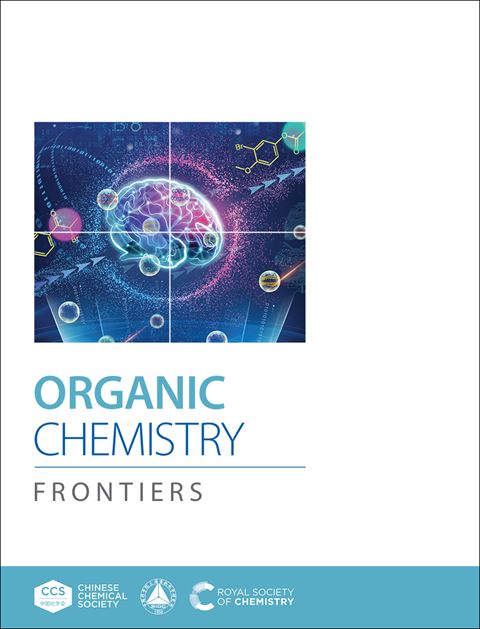Construction of Fused BN-Heterocycles via Boron Atom Insertion: DFT Insights into the Lewis Acid-Base (BBr3/NEt3) Cooperative Mechanism and Selectivity
IF 4.6
1区 化学
Q1 CHEMISTRY, ORGANIC
引用次数: 0
Abstract
The BBr3-mediated N-heterocycle editing reaction through boron atom insertion strategy reported by Song et al. (Angew. Chem., Int. Ed. 2024, 63, e202318613), has been systematically explored by density functional theory (DFT) calculations. The present results reveal that, in addition to BBr3 acting as a boron source and nucleophile, the Lewis base NEt3 also plays a crucial role. Specifically, the Lewis acid-base cooperative interaction between BBr3 and NEt3 facilitates the ring-opening of the substrate 1-(2-vinylphenyl) azetidine, the rate-determining step of the overall cascade reaction. Notably, the organic base NEt3 facilitates the formation of the real nucleophilic species BBr4⁻, thereby promoting the progression of the reaction. Furthermore, the formation of an exceptionally stable C4NB π-ring intermediate and the difference in distortion and exchange-repulsion energies, caused by substrate structural characteristics, are responsible for chemoselectivity and regioselectivity of substrates bearing typical structural motifs and functional groups, respectively. These computational findings not only provide profound mechanistic insights into the tandem reactions involved in the construction of fused BN‐heterocycles, but also elucidate the underlying factors governing substrate preference.通过硼原子插入构建融合bn -杂环:对Lewis酸碱(BBr3/NEt3)协同机制和选择性的DFT洞察
Song等报道的bbr3通过硼原子插入策略介导的n -杂环编辑反应。化学。, Int。编辑。2024,63,e202318613),已经系统地探索了密度泛函理论(DFT)计算。目前的结果表明,除了BBr3作为硼源和亲核试剂外,Lewis碱NEt3也起着至关重要的作用。具体来说,BBr3和NEt3之间的Lewis酸碱协同作用促进了底物1-(2-乙烯基苯基)氮杂啶的开环,这是整个级联反应的速率决定步骤。值得注意的是,有机碱NEt3促进了真正亲核物质BBr4的形成,从而促进了反应的进行。此外,异常稳定的C4NB π环中间体的形成以及由底物结构特征引起的扭曲能和交换排斥能的差异,分别是具有典型结构基序和官能团的底物的化学选择性和区域选择性的原因。这些计算结果不仅为融合BN杂环的串联反应提供了深刻的机理见解,而且还阐明了控制底物偏好的潜在因素。
本文章由计算机程序翻译,如有差异,请以英文原文为准。
求助全文
约1分钟内获得全文
求助全文
来源期刊

Organic Chemistry Frontiers
CHEMISTRY, ORGANIC-
CiteScore
7.90
自引率
11.10%
发文量
686
审稿时长
1 months
期刊介绍:
Organic Chemistry Frontiers is an esteemed journal that publishes high-quality research across the field of organic chemistry. It places a significant emphasis on studies that contribute substantially to the field by introducing new or significantly improved protocols and methodologies. The journal covers a wide array of topics which include, but are not limited to, organic synthesis, the development of synthetic methodologies, catalysis, natural products, functional organic materials, supramolecular and macromolecular chemistry, as well as physical and computational organic chemistry.
 求助内容:
求助内容: 应助结果提醒方式:
应助结果提醒方式:


